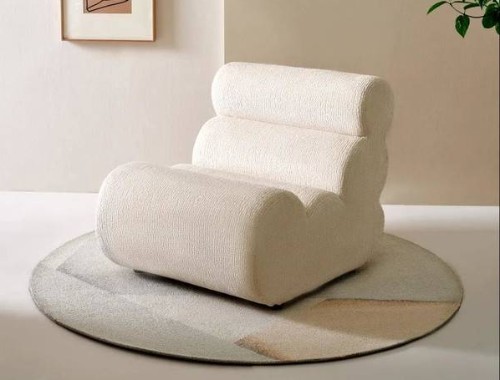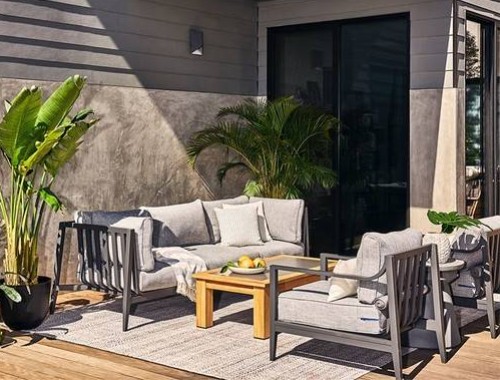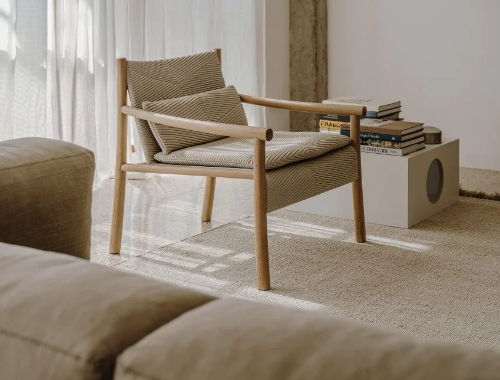Technology, collaboration drive today's designs from office furniture makers
Legendary designer George Nelson once said that the ultimate office “is a daytime living room where work can be done with less tensions and fewer distractions.”
WEST MICHIGAN — Legendary designer George Nelson once said that the ultimate office “is a daytime living room where work can be done with less tensions and fewer distractions.”
More than 60 years later, office furniture makers are working harder than ever to bring the comfortable confines of the home to the office, where workers are increasingly collaborating and mobile technology allows them do the same functions and be productive away from their desk or cube. Those dynamics are driving the new designs coming from companies such as Herman Miller Inc., Steelcase Inc., Haworth Inc. and others.
“Now, for the first time ever, we can live that vision with technology,” said Herman Miller’s Adam Call, remembering the words of George Nelson, a designer for the company in the 1950s and 1960s.

Herman Miller Inc.'s Adam Call relaxes in an updated version of the Eames Lounge chair the company plans to market for the hospitality market and common and collaborative area of commercial markets.
One tactic Herman Miller is using toward that end is adapting its classic lines of Modern residential furnishings for the hospitality sector and the common and collaborative areas of commercial offices, with an aim of creating a comfortable, relaxed office environment conducive to team-building and collaboration.
“Technology is personal. It doesn’t require a desk or a chair, and it performs the same way,” said Call, who handles sales and marketing for Herman Miller’s classic products.
Herman Miller and its counterparts publicly unveil their latest product offerings and innovations next week at NeoCon, the office furniture industry’s massive annual three-day trade show that attracts thousands of facility managers, architects and interior designers to the Merchandise Mart in downtown Chicago.
Many of the new and upgraded products stem from the same design driver: Accommodating the growing need for collaboration in the office, a trend that began emerging a few years ago and has now become mainstream.
Areas designated for collaboration are becoming the “cultural centers” of an office, “which is changing the spaces to be less about ‘where I do my work’ and more about interaction and sharing knowledge and just being together to build intellect for the company,” said TomDiLillo, director of marketing communications for Steelcase’s Coalesse brand.
The innovations debuting at NeoCon reflect the changing nature of work occurring in today’s modern office, which when combined with the high-tech culture, require companies to have more and larger common areas in the office where workers can meet and collaborate. And tasks people could only do at their desk years ago they are now able to perform elsewhere — often in the more comfortable common areas of the office and sometimes at the coffee shop down the street.
The result is less space dedicated to individual workspaces — though even those areas are now designed to create a more open environment, using European-style benching system with lower walls and screens, to encourage collaboration and interaction. In other words, fewer cubes and a blurring of the boundaries that define a person’s individual workspace.
“It’s a smaller footprint, but it’s a different kind of footprint,” said Chuck Saylor, the founder and CEO of Spring Lake-based Izzy+.

Chuck Saylor of Izzy+
The key, designers say, is creating those smaller workspaces in a way that workers don’t feel cramped and still have the room they need, which is driving the industry toward benching systems and away from modular office panels to create greater openness and flexibility.
“It’s kind of giving back to the individual the attributes that we’re taking (with smaller spaces) and making the individual more productive,” said Ray Kennedy, director of North American marketing for Haworth.
The office dynamics that have driven product designs in recent years are accelerating, designers say.
Individual work areas today make up about 70 percent of the footprint of a corporate office, said Paula Bedford, who handles marketing communications at Holland-based Haworth. The remaining 30 percent is used for common and collaborative areas, she said, citing a December research report from Haworth.
Bedford expects that ratio to flip over the next decade, as individual workspaces become areas for "drop-in use," the Haworth white paper states.
Steelcase cites research data that shows 57 percent of companies that reconfigure their office do so to create team spaces.
Izzy’s Saylor refers to the current dynamic as the “deconstruction of the office” that generations of workers have known to create an office that’s “more relevant to the structure it’s trying to serve.”
“Where we work and how we work is being deconstructed and reconstructed in a big way. Depending on the size of the organization or where it’s at, this process can be fairly dramatic,” Saylor said. “Office and place and size were extremely important 25 years ago. Our views are changing dramatically. Things that are not really as important as they once were.
“Everything we do today is about that ‘conversation.’ It’s all about that collaborative space.”
The changes are also driven by a dose of economic practicality, as corporations seek to optimize or shrink their office footprint to cut real estate costs.
Years ago, the typical workspace — quite often a cubicle made from modular office panels — averaged eight feet by eight feet or larger. They now average six-by-eight feet and some of Herman Miller’s client in major markets are interested in a system to accommodate six-by-six-foot work stations.
“There’s a lot of pressure around real estate costs,” said Steve Spykerman, a product portfolio leader in Herman Miller’s Product Management Group. “It’s rare that we have clients come in that aren’t experiencing that.”
The changing designs also reflect the changing attitude of workers, said Ryan Anderson, a manager on Steelcase’s product launch team. Knowledge workers, especially, are not nearly as interested in having their own space in the office, focusing instead on collaborating and interacting with their peers.

Steelcase's Ryan Anderson
“People don’t like to working in a vacuum,” Anderson said.
Nor do they always like working in the office, as their mobile devices, laptops and wireless technology allow them to go off-site — perhaps to the local coffee shop to write that report, for instance. Which creates a problem: “Being able to keep them in the culture of the company and as an ambassador of your brand,” Anderson said.
-

Quanyou teamed up with the fashion brand ANNAKIKI to launch a new joint product!
-

Outer, an outdoor furniture brand founded by Chinese, enters the Australian market
-

National Bureau of Statistics: The retail sales of furniture in the first three quarters reached 120.5 billion, an increase of 20.7%
-

Enveloping lounge chairs and lightweight office chairs from Arper feature

 沪公网安备31010402003309号
沪公网安备31010402003309号



